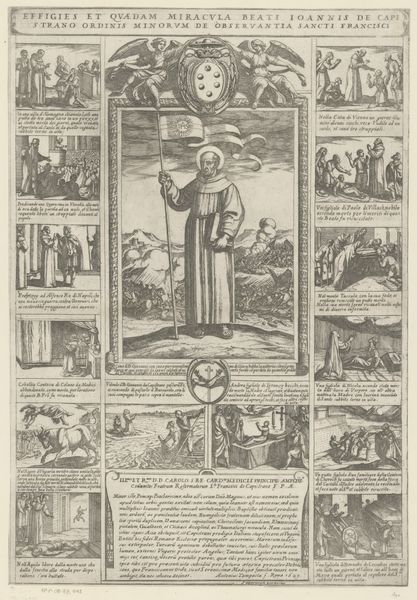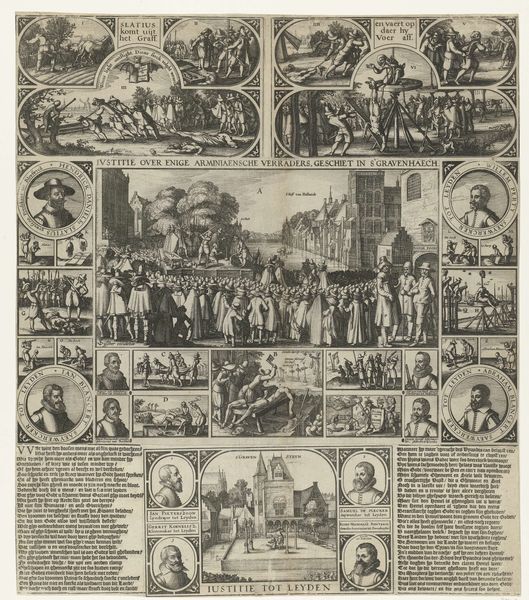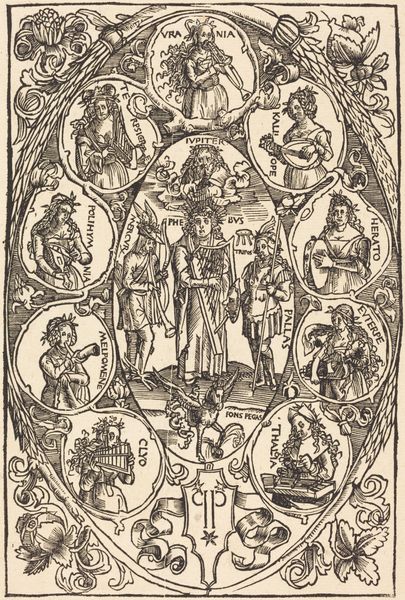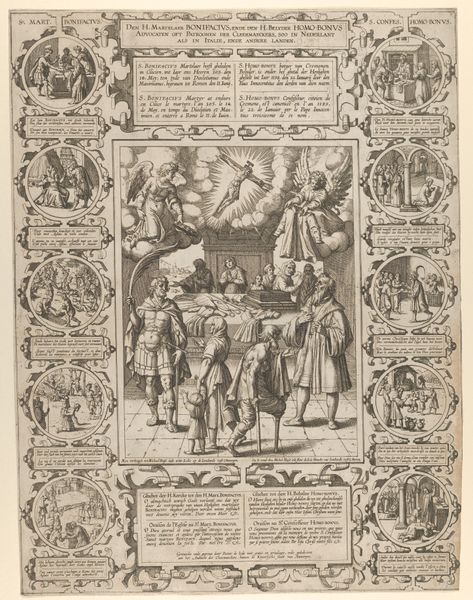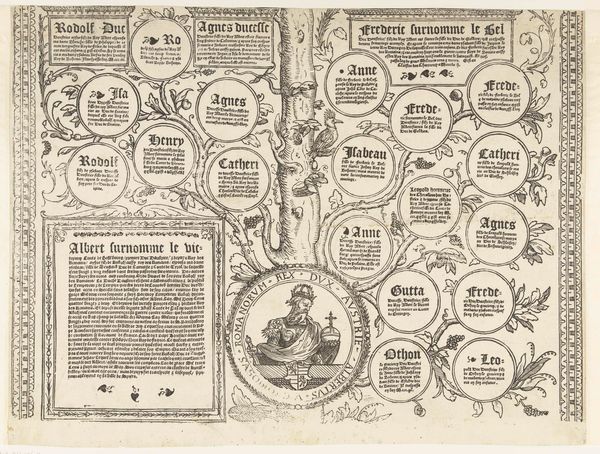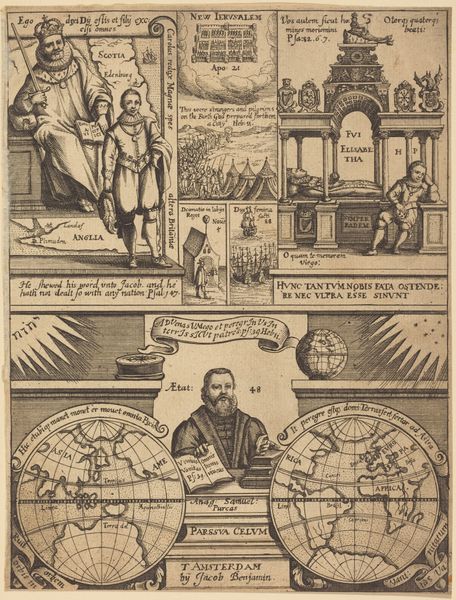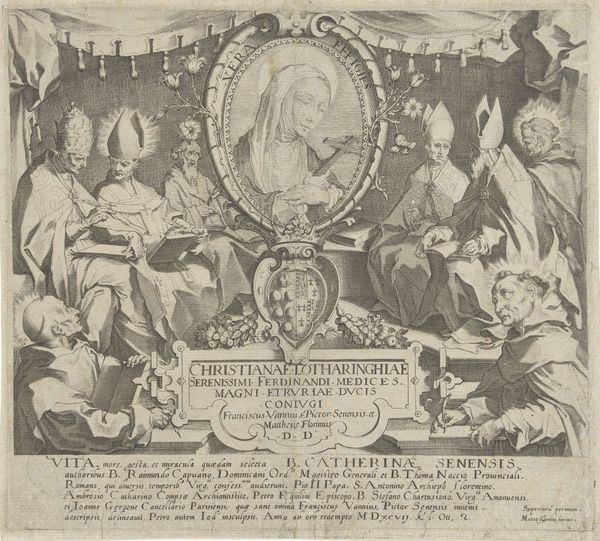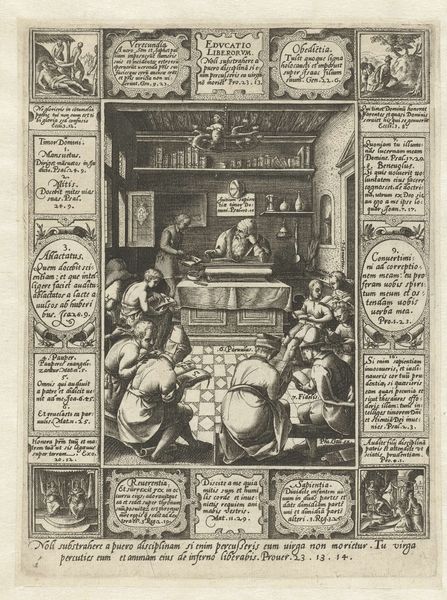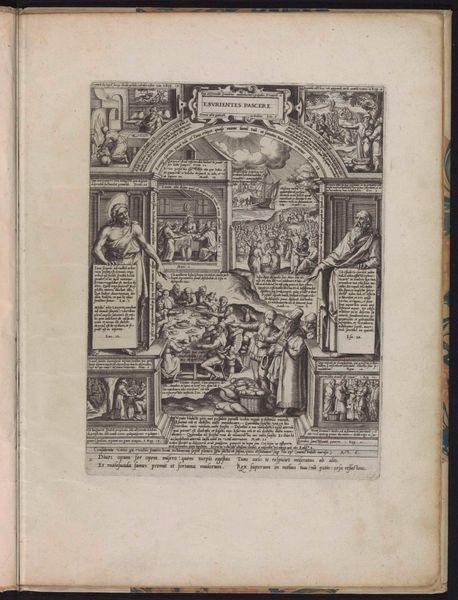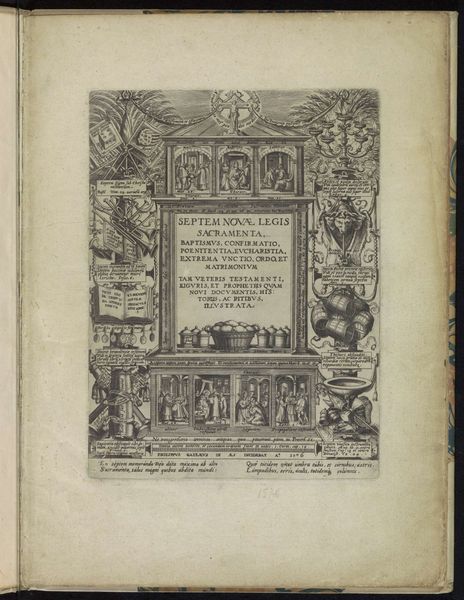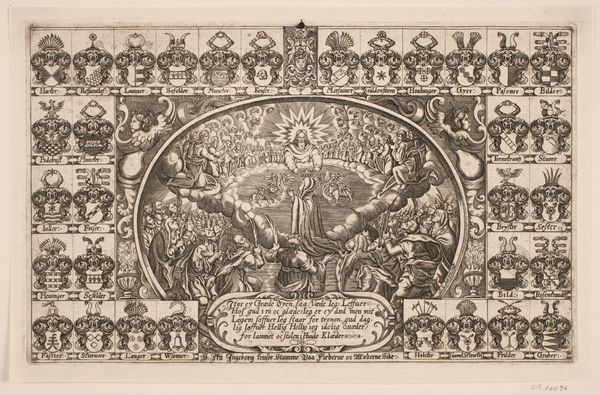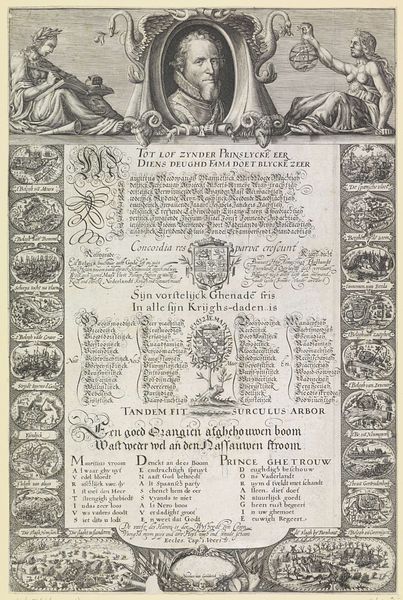
print, engraving
#
portrait
#
medieval
#
pen drawing
# print
#
line
#
history-painting
#
engraving
#
calligraphy
Copyright: National Gallery of Art: CC0 1.0
Editor: This engraving, "Frontispiece," is attributed to an anonymous artist, likely around 1625. The material is print and the piece seems crowded and a little overwhelming at first glance. With its maps and portraits, I'm wondering what story it's trying to tell. What stands out to you? Curator: Let’s consider the process of producing this "Frontispiece." Look at the fine lines, achieved through engraving, and the sheer labor involved in creating such a detailed image. This wasn’t simply aesthetic; it was a product of early 17th-century print culture, used to disseminate information widely and build reputation, yes, but let's think of it as something that involved labor, skill and a developing set of industrial practices, so to speak. What kind of access would artists, patrons and ordinary people have to something like this, and what were its social implications at the time? Editor: So you're saying the image's *content* is almost secondary to the methods of its making and distribution? That's an interesting thought, because I immediately jumped to interpreting the symbolism. Curator: Not secondary, precisely, but deeply entwined. Consider the relationship between the images and the text, which are trying to advertise "the Wonders in Nature & Providence, The Arts, Varieties, & Vanities of Men." Each of these served a market demand for novelty and moral instruction, so it's like a sales pitch or prospectus and a historical artifact all at once. Now what do the materials themselves and the scale of its reproduction imply about who was consuming and profiting from it? Editor: That puts a completely different spin on it. It's less about high art and more about, well, a historical artifact of production. Thanks, that changes how I'll look at engravings from now on. Curator: Exactly! We often separate “art” from “artifact”, but in doing so we potentially ignore or devalue how knowledge and status were circulated through the production and consumption of material. And that helps contextualize much of what you'll continue to study.
Comments
No comments
Be the first to comment and join the conversation on the ultimate creative platform.

